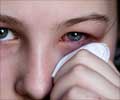- A molecule called BX795 appears to have anti-herpes simplex type 1 (HSV-1) properties when used in higher concentrations.
- Its mechanism of action is different from the currently used nucleoside analogues.
- It has the potential to be used for drug-resistant HSV-1 infections.
- Higher concentrations of BX795 cleared the HSV-1 infection from the cells.
- BX795 was effective against HSV-1 viral infection that was resistant to treatment with acyclovir.
- BX795 acted only on infected cells, with no negative or side effects on the normal cells at the effective concentration.
- The combined use with another anti-HSV-1 drug trifluorothymidine (TFT) did not produce a synergistic effect.
If successfully developed into a drug, BX795 will be particularly useful for those herpes infections that have developed resistance to the currently available medications. Also, given the mechanism of action of the molecule, it could also be effective against other viral infections including HIV.
The potential for the use of BX795 against HSV-1 eye infections as well as other viral infections has yet to be evaluated through extensive studies to prove its continuous effectiveness and to detect and address any drug delivery and safety concerns.
About Herpes Simplex
Herpes simplex (HSV) virus is a virus that infects the skin and mucous membranes. White the type 1 virus (HSV-1) usually affects the face including the eyes and mouth, the type 2 virus (HSV-2) is sexually transmitted and usually affects the genitals. Cases of HSV-2 infection affecting the eyes and mouth have also been reported, possibly transmitted through oral sex. The infection results in painful blisters and ulcers. Involvement of the eyes can result in blindness. Spread of the infection to the brain can result in meningoencephalitis. The herpes infection can remain latent in the nerves after the initial treatment of the infection, and re-emerge again when the immunity reduces.The herpes infection is treated with drugs like acyclovir, valacyclovir, famciclovir, trifluorothymidine and ganciclovir. These drugs are not without side effects, and instances of resistance to the medications have been noted. There is therefore an unmet need for the development of new alternative drugs for the treatment of herpes infections, and BX795 appears to be a promising option.
Reference:
- Jaishankar D et al. An off-target effect of BX795 blocks herpes simplex virus type 1 infection of the eye. Science Translational Medicine 2018: Vol. 10, Issue 428, eaan5861 DOI: 10.1126/scitranslmed.aan5861
Source-Medindia












